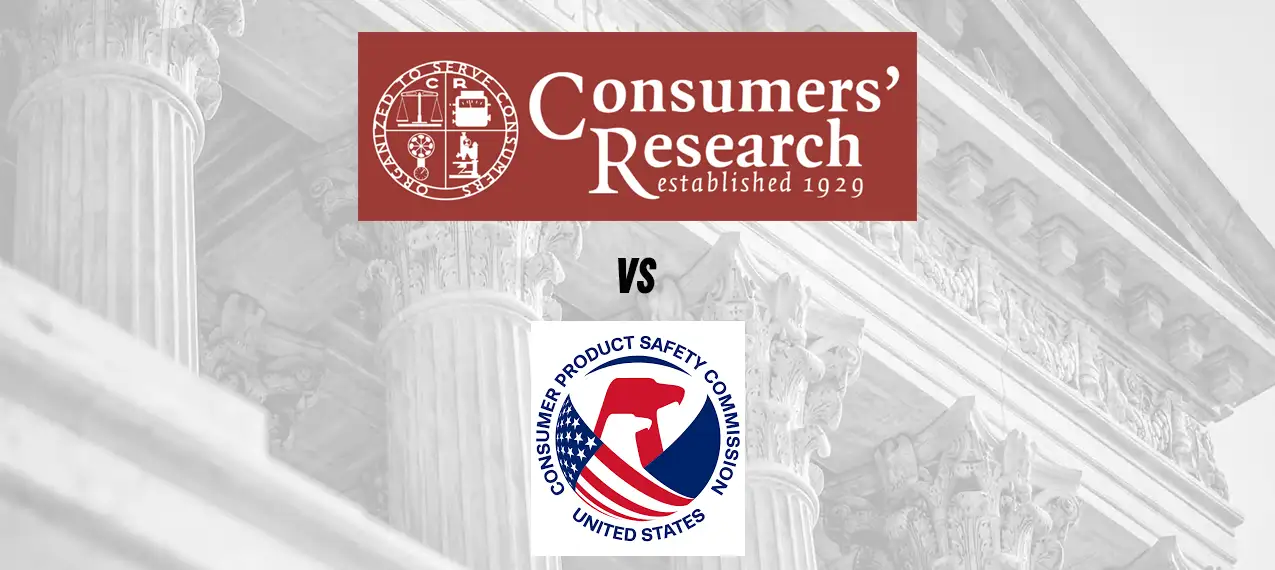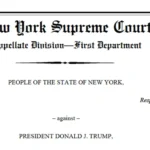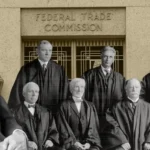
In July, Landmark filed a brief urging the Supreme Court to hear the Consumers’ Research challenge to the Consumer Product Safety Commission (“CPSC” or “Commission”) and its structure. While the agency purports to be a nonpartisan body of experts, it is still part of the Executive Branch. Political accountability of federal agencies is key to the protection of individual liberties and ensures voters’ ability to influence the direction of administrative policy. This is why Landmark believes that the CPSC’s Commissioners should answer to a President with the ability to terminate them. Readers can find Landmark’s brief here and our summary here.
On August 26, Solicitor General Elizabeth Prelogar filed a brief on behalf of the Government opposing the petition to hear the case, linked here. The Government makes two main arguments. First, they claim that the organization that brought this case, Consumers’ Research, does not have legal standing to sue the Commission. They argue that Consumers’ Research is a research and education organization, not a product manufacturer that is subject to CPSC regulations. Instead, Consumers’ Research based its petition on the denial of certain Freedom of Information Act (FOIA) document requests in 2021. Consumers’ Research asserts its standing in its petition here, arguing that because of the removal restrictions for Commissioners except for “neglect of duty or malfeasance in office,” the CPSC lacked the presidential oversight necessary to lawfully deny their requests. 15 U.S.C. § 2053(a). The Government responded to this claim by mentioning that FOIA request rules are not an exercise of substantial executive power at other agencies like the U.S. Commission on Civil Rights. It is clear that the standing issues raised by the Government are the stronger part of the CPSC’s defense. And although this argument is compelling, it is important to note that the U.S. District Court and the Fifth Circuit Court of Appeals both found Consumers’ Research to have standing to file this suit.
The second half of the Government’s argument focuses on the merits of the case and does not fare as well. They assert that this case does not warrant revisiting the controlling precedent on removal restrictions, Humphrey’s Executor v. United States, 295 U.S. 602 (1935). In Humphrey’s Executor, President Franklin D. Roosevelt fired a holdover appointee to the Federal Trade Commission for political reasons, despite a statutory provision that limited the President’s ability to fire Commissioners. The Supreme Court upheld the restriction on presidential removal authority. Writing for the Court, Justice Sutherland reasoned that the FTC wielded power that was “quasi-judicial” and “quasi-legislative” in nature, rather than executive. Humphrey’s Executor, 295 U.S. at 602. Thus, the case carved out an exception to the general understanding that presidents can fire officers of the Executive Branch. However, it is important to note that the Government does not actually claim that the modern CPSC wields no executive power. Instead, they argue that the decades-long history of allowing for-cause removal restrictions at federal agencies like the CPSC should hold because there is “no sound reason” presented in this case to revisit this. This argument against reevaluating the implications of Humphrey’s Executor is primarily normative. It is not a factual claim that the CPSC adheres to the characteristics of the 1935 FTC. And while we do agree with Justice Clarence Thomas’s characterization of Humphrey’s Executor itself as “nothing more than handwaving and obfuscating phrases,” Seila Law LLC v. Consumer Financial Protection Bureau, 591 U. S. 197, 246 (2020), the exception it created does not even apply. Since the CPSC wields substantial executive power, Humphrey’s Executor does not protect the CPSC’s structure.
Consumers’ Research seized on many of these key weaknesses in their reply, filed on September 9 and linked here. Responding to the Government’s claims about standing, they rely both on the precedent set by Seila Law and their own success in demonstrating standing in the lower courts. In Seila Law, a law firm challenged the Consumer Financial Protection Bureau’s (CFPB) structure when subjected to investigative procedures. They were found to have standing, and the majority opinion, written by Chief Justice John Roberts, describes the threshold for standing in removal requirement cases in a way that directly supports Consumers’ Research’s claims now. “We have held that a litigant challenging governmental action as void on the basis of the separation of powers is not required to prove that the Government’s course of conduct would have been different in a ‘counterfactual world’ in which the Government had acted with constitutional authority.” Seila Law, 591 U. S. at 206. Furthermore, Consumers’ Research emphasized that while eighteen lower court judges had presided over this case already, none held that they lacked standing to bring it.
The merits argument presented by Consumers’ Research is similarly exacting. It addresses the evasive language used by the Government in their defense of the CPSC’s structure and reaffirms the cut-and-dried nature of this case. They contend that this case simply asks the Supreme Court to reapply the same logic used to adjudicate Seila Law. If the “quintessentially executive power[s]” of the CFPB were “not considered in Humphrey’s Executor,” Seila Law, 591 U. S. at 199, then neither were the powers of the CPSC. The exception in Humphrey’s Executor therefore cannot be read to apply to the CPSC under a faithful reading of Seila Law. And because the CPSC violates the separation of powers in almost exactly the same way as the CFPB did, Consumers’ Research notes that returning removal powers to the President does not represent a departure from precedent, but rather a “copy-and-paste job.”
In short, the President should have the power to fire the leadership of federal agencies. Landmark reaffirms its support for Consumers’ Research’s case and for bringing accountability to the administrative state.
SUPPORT LANDMARK LEGAL FOUNDATION
We are truly facing existential threats to our individual rights and liberties, the Constitution, and our national character. If unchallenged, this assault on our very way of life will ruin our great nation. With your financial and moral support, Landmark is not going to let that happen without a fight. Will you join us?
JOIN OUR MAILING LIST
Never miss an update from Landmark Legal Foundation as we continue the fight to preserve America’s principles and defend the Constitution from the radical left.
Landmark will NEVER share your contact information and we will not flood your inbox.





